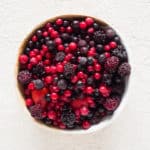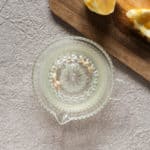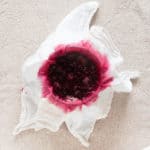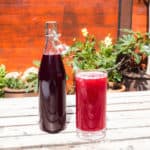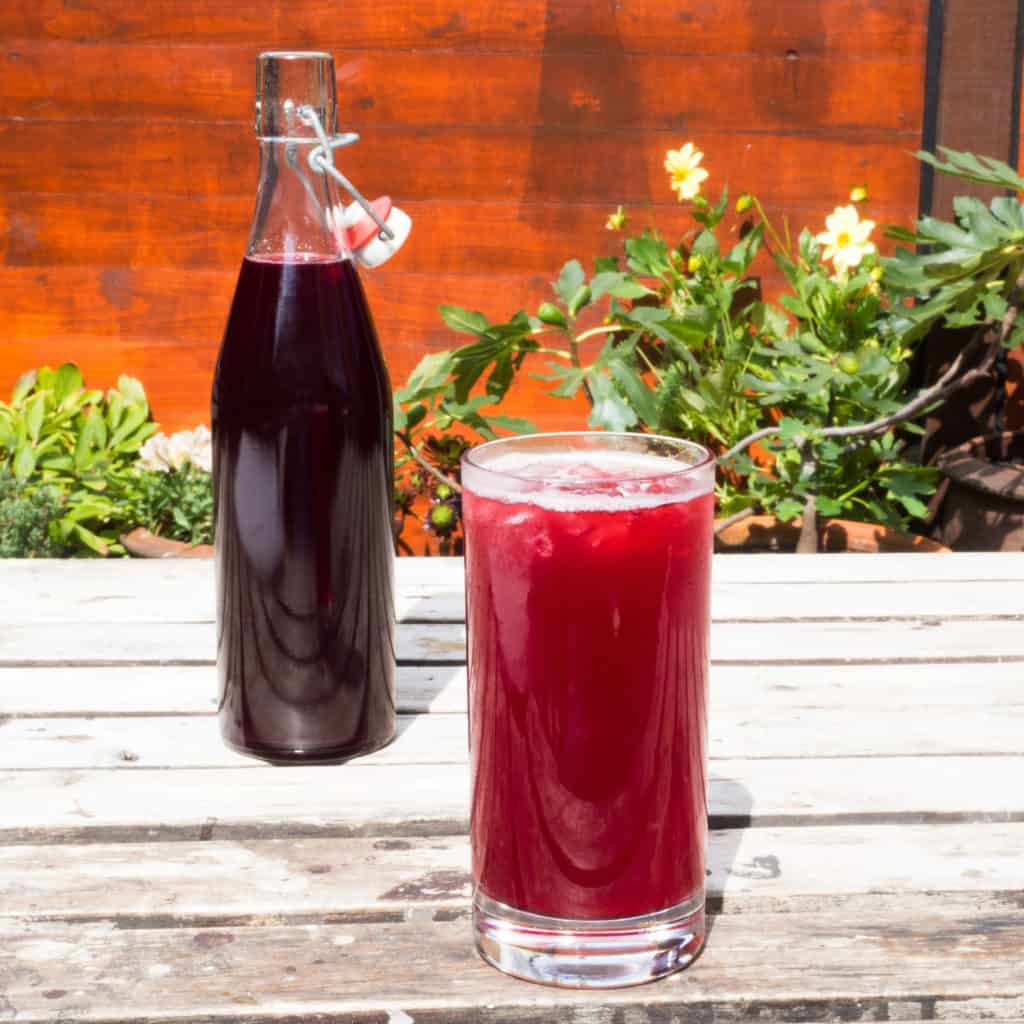
Summer Fruit Cordial is a wonderful cordial that makes use of the glut of strawberries, blackberries, raspberries, blackcurrants , redcurrants and more you can collect from hedgerows or PYO farms in August. Summer Fruits are an addictive mixture of sweet and tart. Homemade Summer Fruit Cordial is wonderful as a drink (with or without Prosecco).
Summer Fruit Cordial is so easy to make. It stores well for three to four weeks in the fridge or keeps in the freezer for six months or so.
You can use summer fruits in any proportion you like, depending on your taste and availability. You can use 100% of your favourite seasonal fruit if you like. I like to use 100% blackcurrants (to make cassis!).
You can find the full Summer Fruit Cordial recipe here.
As well as the traditional non-alcoholic drink with still or sparkling water or as the key ingredient in fancy cocktails you can also use Summer Fruit Cordial to make a wonderful sorbet, ice lollies or drizzle over Lavender Ice Cream, fruit salad, breakfast porridge or add some pizzazz to Banana, Peanut Butter and Almond Smoothie. You can also use it as a mixer with Prosecco, gin or vodka! The left over fruits are also great with ice-cream or sorbet or added to overnight oats and smoothies.
Top tip! You can use frozen fruit if you cannot get seasonal fruit.
The best way to sterilise jars, funnels and other equipment is in the dishwasher. Just make sure when you remove items from the dishwasher you do not ‘de-sterilise’ them by touching any inside surface.
Preparation
Difficulty easy
Makes around 750 millilitres
Preparation time 5 minutes
Cooking time 25 minutes
You can find the full Summer Fruit Cordial recipe here.
Allergens
Summer Fruit Cordial is gluten-free and vegan as well as…
Celery free
Coconut free
Garlic free
Lupin free
Mustard free
Nightshade free
Onion free
Peanut free
Sesame free
Soya free
Tree nut free
About
The best places to get great value, in-season fruits are ‘pick your own’ farms. You can collect as much or as little as you need (usually too much!) for a very reasonable price. Plus you can quality control (and test) your fruits! If you don’t live near a ‘pick your own’ farm you can use frozen blackcurrants which are usually of great quality and work really well.
The blackcurrant (ribes nigrum) is one of my favourite summer fruits. I adore its tartness and rich flavour. The blackcurrant is a shrub with slightly sour, dark purple, almost black, berries. The blackcurrant bush is native to temperate parts of central and northern Europe and northern Asia. Raw blackcurrants are rich in vitamin C and polyphenol phytochemicals.
Blackcurrants can be eaten raw but as they are very tart or sour, they are usually cooked or baked in sweet or savoury dishes. Blackcurrant jam is very particularly popular. The naturally high pectin content of blackcurrants means that the jam sets very well. Blackcurrant cheesecake was a stalwart of the 1970s and today blackcurrant flavoured yoghurts are popular as well as blackcurrant sorbet and icre cream. The tartness of the blackcurrant with the sweetness are particularly refreshing.
Blackcurrant cordial is popular and the alcoholic version of this is cassis (or crème de cassis), a blackcurrant liqueur that forms the base of kir royale (cassis with Champagne). Anyone with a misspent youth will also be familiar with ‘snakebite and black’ which is equal quantities of lager and cider with a splash of blackcurrant cordial. It is many, many years since I tried this but I remember it being surprisingly okay…
A 100 gram serving of raw blackcurrant provides 63 kilo-calories. Raw blackcurrants have a high vitamin C content (218% of RDA) and moderate levels of iron and manganese (12% RDA of each). Blackcurrant seed oil is rich in vitamin E and unsaturated fatty acids.
